Bikes these days are so good, and so much fun to ride, that it’s easy to overlook the things that make you a better rider. It’s also easy to let suspension camouflage bad technique and poorly set up bikes, and easy to let trail centres lead you along without you having to really test yourself on the rollercoaster effect they offer.
Instead of heading out for a ride without thinking, consider the finer – yet surprisingly simple – techniques that make you a better rider. Bike setup can also help – a correctly sprung and set up bike will do your technique wonders, whereas a bike that’s not right could be a hindrance.
This month, we’re looking at all-mountain and freeride bikes. They share many similarities in their appearances and the way they can be ridden. And there are a few things you can do with both that will really make you a better rider, both faster and more capable when the going gets steep and technical.
1. Attack off-camber
It's easy to shy away from off-camber sections, but if you hunt out a section and ride it till you find your limits, you’ll be astonished at the traction you can find. Get your outside pedal down and put your weight on it heavily to cut the shoulder tread of your tyre into the ground to find more grip.
2. Attack berms
Berms aren't there to make cornering easier – they're there to make it faster. Longer berms need to be railed, and tighter berms should be attacked. Come in with less speed and push your weight into the berm through your feet – this pushes you out ready to get back on the gas.
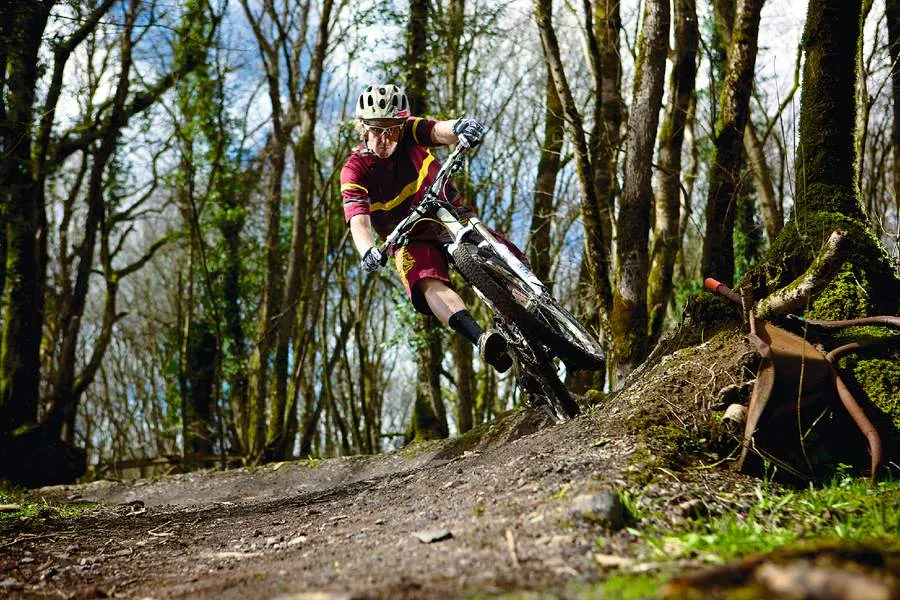
3. Gap jumps
Even a small gap that you need to jump can be a real mental block for some people. The only way to get over it is by getting out there and trying it. Start small and build up – you’ll soon work out how fast you need to go in order to clear a gap, and will be able to apply it to any riding out on the trails. Being able to guess a gap is essential to being able to ride uneven and challenging terrain fast.
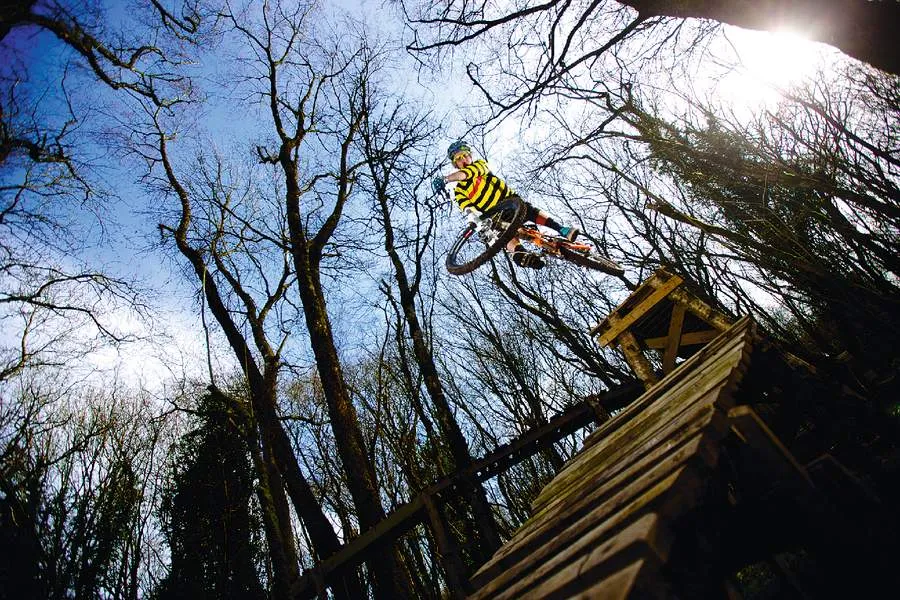
4. Drifting
Sliding on mud is inevitable – so don't fight it. Instead, stay relaxed and nine times out of 10 your wheel will find traction again, as long as you're on a good line. Find a slippery patch and practise getting loose.
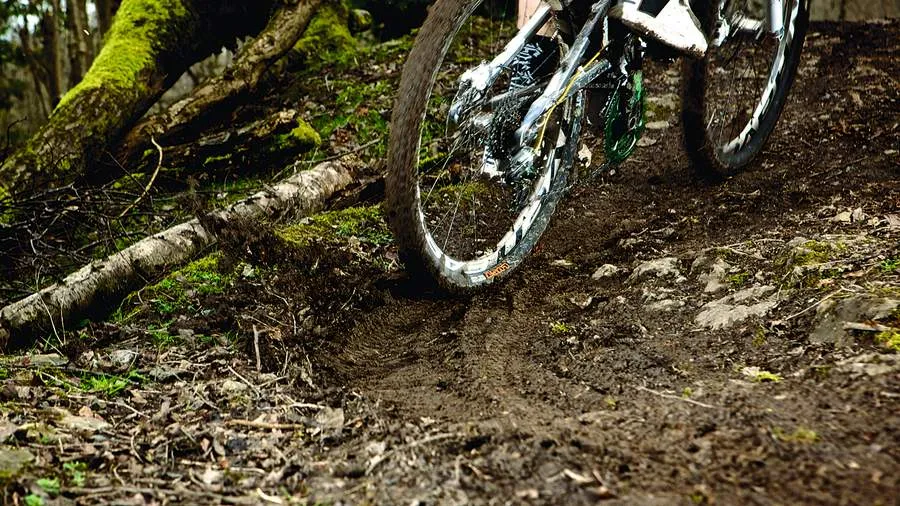
5. Drops
At first the sensation of dropping can feel odd, but you should make an effort to get used to it because it comes in handy in extreme situations. Gauge your speed, lean back and pull up. Try to land both wheels together and use your whole body to absorb the shock when you touch down.
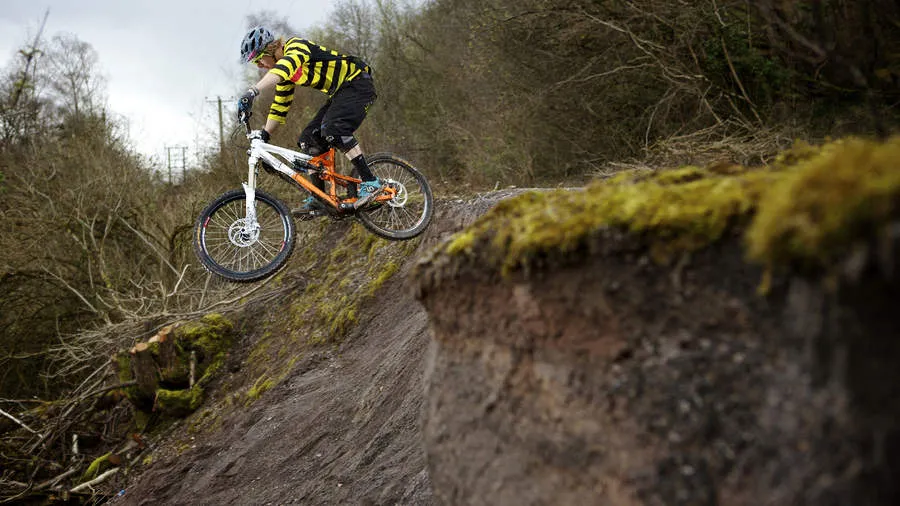
6. Pre jumping
For fast trail riding, you need to be able to put the bike where you want it and prevent accidental airtime, and pre-jumping is a good way to do this. Over-jumping a big bank could spell catastrophe, so pull a decent sized bunnyhop before a transition and aim to land in the transition. This will also boost your speed exiting the bank.

7. Get air
Head to a play spot and practise jumping. Drop your seat a little, focus on your landing and run-out areas, and stay relaxed and go with the flow. Learn how your bike feels when you jump it – and learn how it feels when you get airborne accidentally – that way you’ll be able to deal with it on the trail.
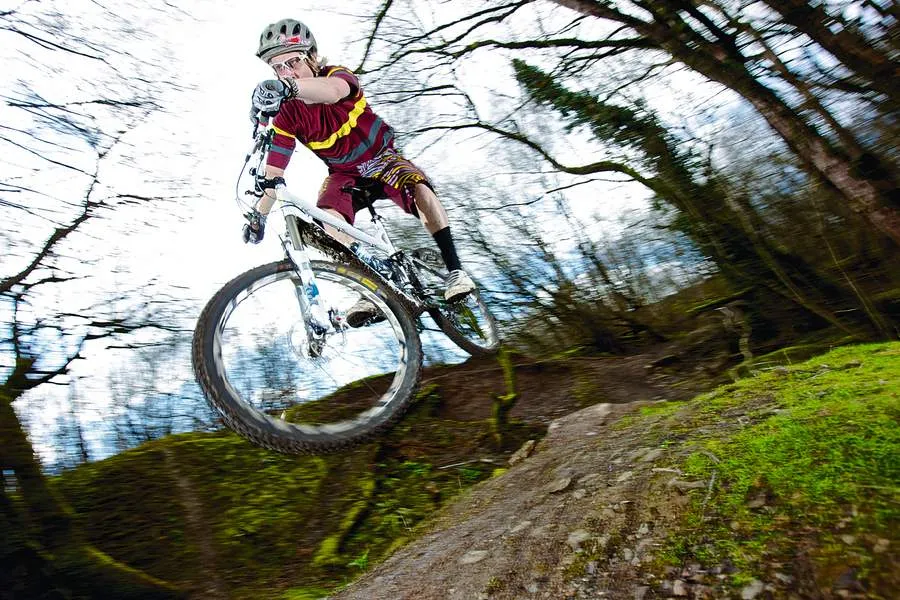
8. Nosedive
The best way to gain speed from a trail is to pump your bike into a transition when landing. Your front end falls naturally when airborne, so the key is not to fight it – extend your arms and aim to meet with the landing. Mimic the shape a dolphin makes as it crests a wave. It will feel scary at first, but once you get used to it it’ll be fine.
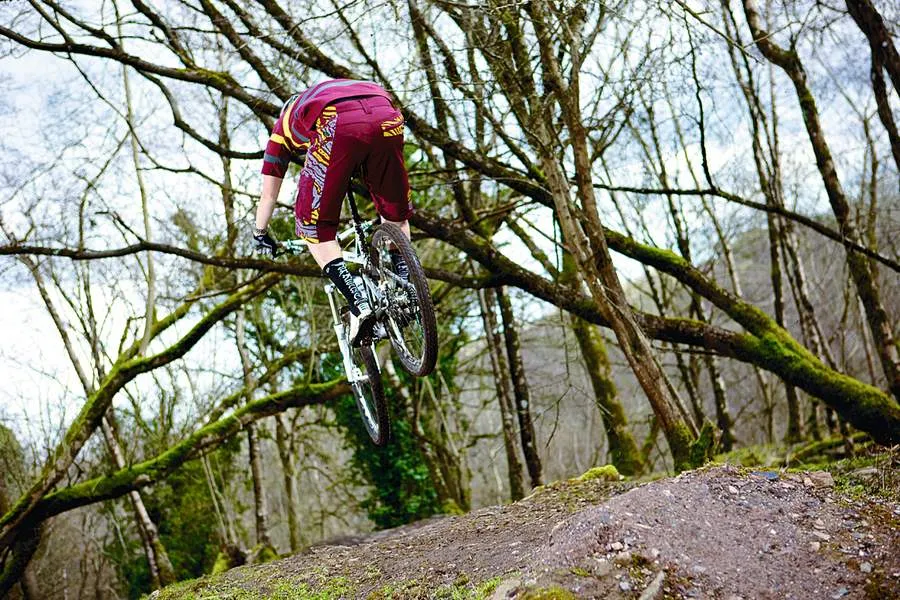
9. North Shore
North Shore riding is very good for building balance and increasing confidence. Find the nearest spot to you and practise riding it – it’ll make you more aware of the length of your bike, its turning circle and where vitals like your rear mech and pedals are.
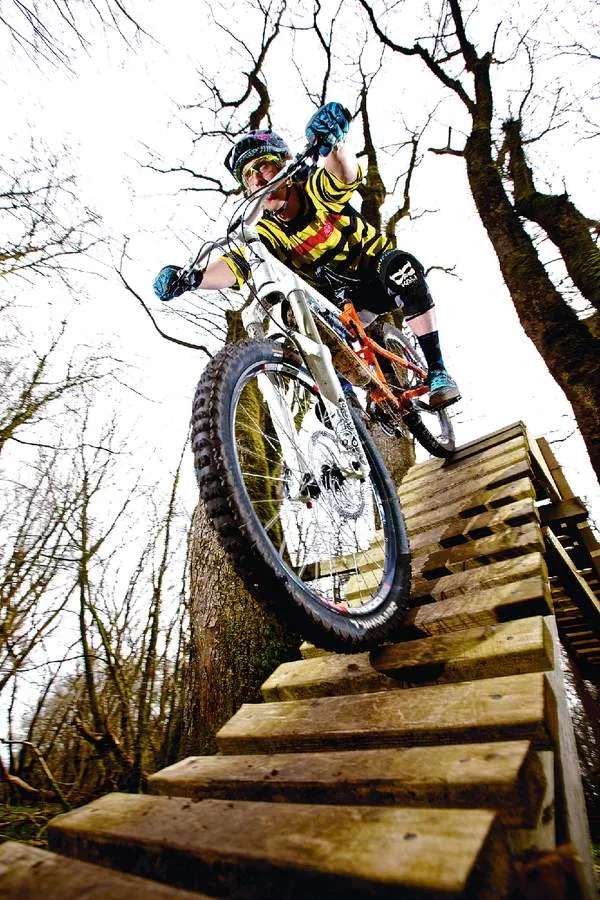
10. Weight the bike into turns
Big bikes need an extra push top get the best out of them. The extra suspension and weight combined with the attack geometry allow you to really fire them through turns. When you hit berms, compress the bike as hard as you can and ricochet off down the trail.

11. Looking ahead
Whatever you're doing, always look ahead – up to 50ft down the trail – not at obstacles immediately ahead of you. That way, by the time you hit that dodgy patch you spotted, you should already be looking way down the trail and trusting your body language to push you through.

12. Ride big terrain
Seek out a good scree slope. Test your nerve, your brakes and your judgment. Finding your comfort zone will make you a better rider in all situations – on steep scree slopes you can always get off the back of the bike if it's not going well.
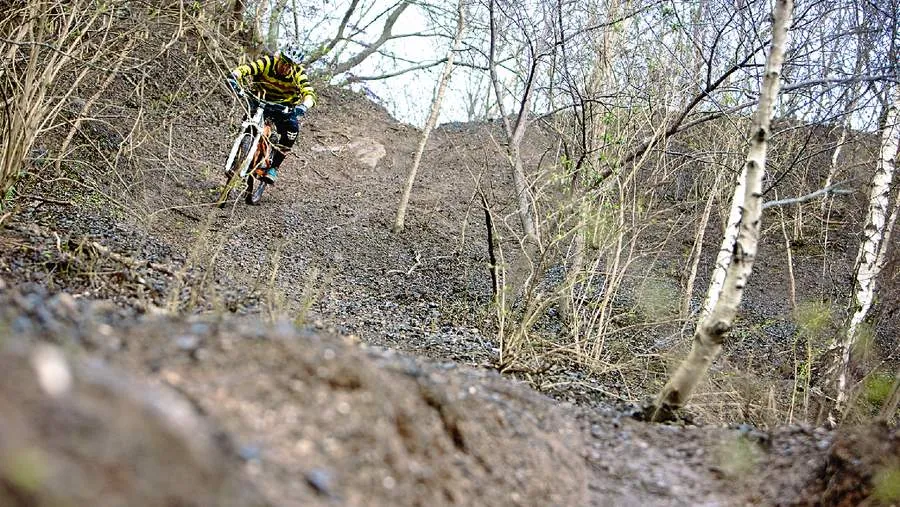
Bike setup
Setting your bike up correctly is essential. Your local bike shop will be able to help you make the finer adjustments to suit your riding needs, but our guide will point out what you need to do to get ready to shred – fast.
All-mountain
All-mountain bikes typically have 120-150mm of suspension travel front and rear, and need to be set up to allow efficient climbing and unhindered descending.
13. Stem length
Shortening your stem increases steering response and control. Between 60 and 80mm will be best, depending on your height and top tube length. The shorter you go the quicker the handling – but climbing suffers because this reduces the weight on the front of your bike.
14. Brake lever position
As a rule of thumb, your brake levers should line up with your arms when you’re seated. Any lower and they’ll become difficult to reach when descending steep terrain. Too high can strain your wrist. To improve your descending, raise your levers a touch.
15. Front bolt-through
A bolt-through fork will increase your stability and handling on aggressive terrain. If your bike doesn’t use a bolt-through front end with a long-travel fork, you could be missing out on hammertime.
16. Suspension setup
Aim for 25-30 percent of the available travel as sag. Less sag will increase your performance uphill and in smoother situations. More than that offers a plusher ride, but will slow you down unless it's rough out there.
17. Saddle position
Avoid putting your saddle too far back, because this can put your weight too close to the rear wheel axle, which makes climbing hard work, and tires your legs quicker. If you feel you need to put your saddle far back on the rails, it's possible your frame is too short for you.
18. Tyre combos
Grip and rolling resistance are key on all-mountain bikes. A slightly gnarlier front tyre will improve control in turns and when braking on descents. Go for a rear tyre with less central tread, but with a shoulder that will dig in – 2.10-2.4in tyres are the best size options for a fast ride on varied terrain.
19. SPD pedals and shoes
Choose SPD-type pedals. You can pull up on the pedals to get uphill more efficiently. Downhill they help you loft the bike over rough patches.
20. Disc size
On lighter bikes, most of the braking is done on the front end, so choose a bigger disc up front, such as a 185mm disc. This works well with a 160mm outb ack, and gives even braking power.
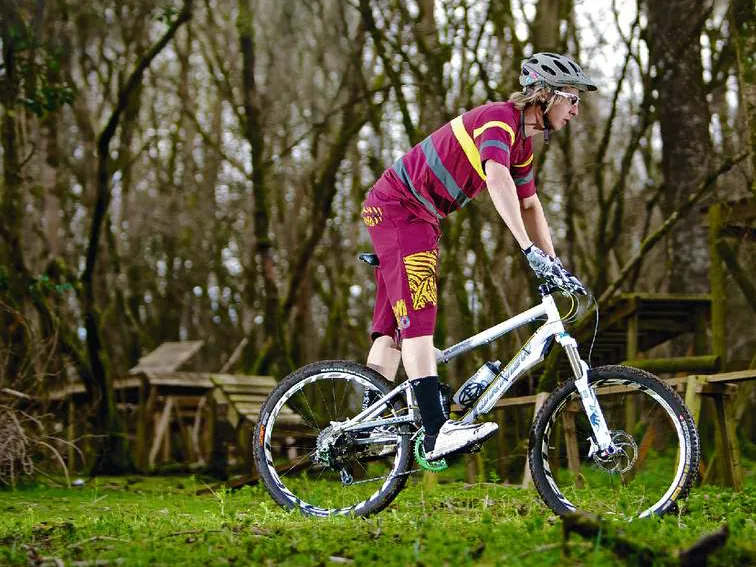
A classic all-mountain bike – Turner's 5 Spot
Freeride
Freeride bikes are essentially longer-travel versions of all-mountainbikes. They’re stronger, heavier and have slacker geometry to increase control in steep and technical scenarios
21. Nose up on saddle and low position
For more control on steep downhills, pop the nose of the saddle up to pinch between your knees. It’ll help you feel more confident too.
22. Bar width
A wider handlebar can improve your performance in demanding conditions because your weight is spread more evenly across your bike – but don’t go too wide for your height. Shorter riders will benefit from bars between 711 and 750mm wide, whereas riders over 6ft can make the most of bars up to 800mm wide. If the trail is tight and tree-infested, narrower bars will help.
23. Bashring
Ditch your outer chainring in favour of a bashring. You’ll be able to climb easily with the inner and middlering, and the bashring will fend off logs and rocks.
24. Flat pedals
Flat pedals give the benefit of not being attached to the bike, so if you need to jump ship because of a particularly nasty obstacle, you can. They also make dabbing a foot on turns easier.
25. Sticky rubber
If you ride flat pedals, invest in some decent shoes, such as a pair of FiveTens that use their Stealth sticky rubber soles. Their leech like surface gives surefooted grip and is predictably safe in rough conditions.
26. Burly tyres
Look for big volume tyres with a deep tread and pronounced shoulder to give you maximum control. If you’re riding more gravity-based trails, look for soft compound rubber to increase grip even more. Harder rubber rolls faster, but has less grip.
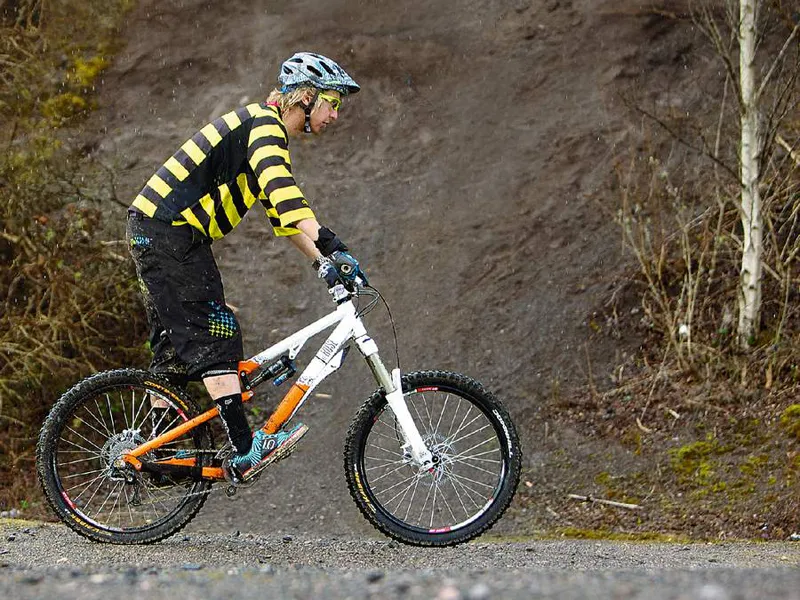
A typical freeride bike – the Beefcake from German brand Rose
Off the bike
Much of being good on a bike is preparing off the bike. You should eat well and look after your body. For all-mountain and freeride riding, you need good endurance strength too.
27. Eating
Carbohydrates are a great fuel for riding, and proteins really help replenish your muscles afterwards. Look for carbs in jacket potatoes, pasta and rice, and protein in lean steak and eggs. Fatty acids like Omega 3, found in oily fish such as mackerel are also good for you.
28. Drinking
Water is the most important thing for keeping you hydrated and can resist cramping and the dreaded ‘bonk’. Keep plenty of water on board but also try some isotonic drinks – they’re filled with essential salts and sugar to replenish what you use when riding.
29. Stretching
Keeping your body flexible is a must – avoid muscle knots and tightness by stretching fully before and after you ride. When you’ve been riding for long distances, pay particular attention to stretching your hamstrings, quads, calf muscles and lower back.
30. Resting
Allowing the body to recuperate is often overlooked yet one of the most important elements that should be included into any exercise regime. It allows muscle tissue to repair and should never be considered a waste of time.
Next installment: Downhill bikes and short-travel 4X rigs.
